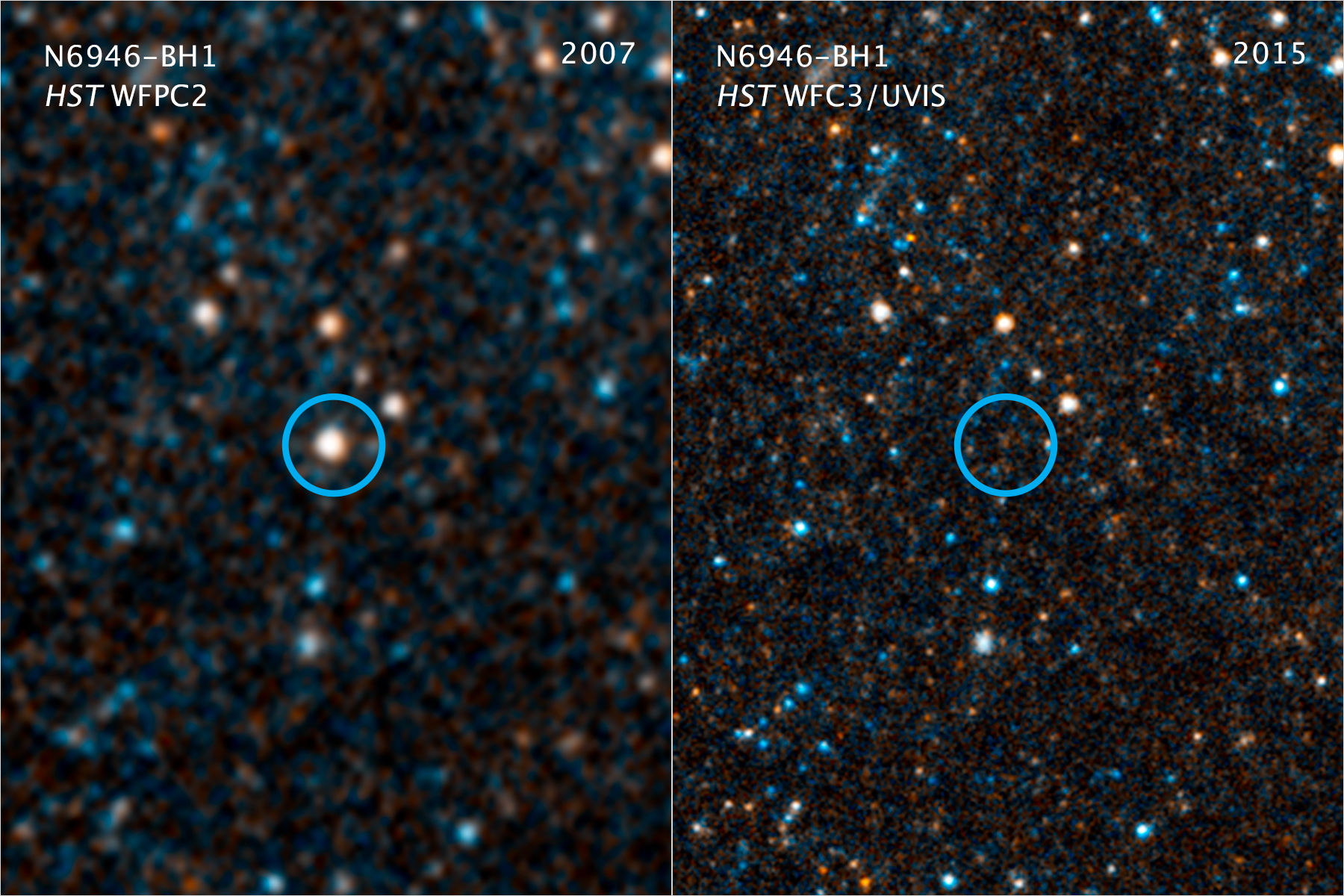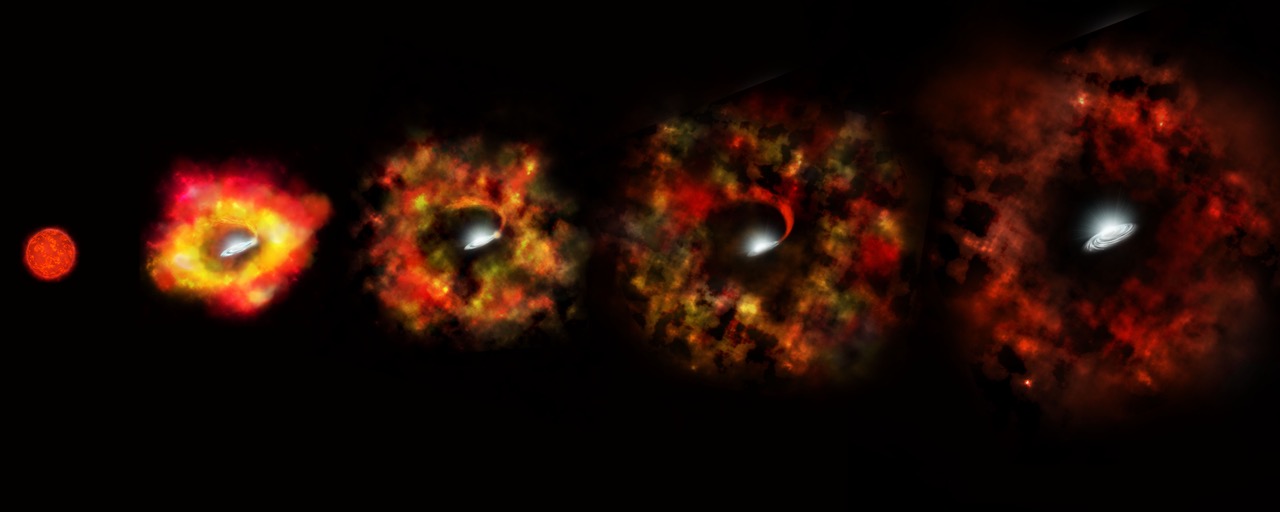Supernova Fail: Giant Dying Star Collapses Straight into Black Hole
It appears the path to becoming a black hole is more complex than astronomers thought. Rather than exploding into a supernova before collapsing into a black hole, as expected, one giant star skipped the pyrotechnics and went straight to the collapse.
This so-called "massive fail," spotted in a nearby galaxy, could explain why so few massive stars have been observed going supernova, researchers conducting a new study explained. As many as 30 percent of these massive stars may instead quietly collapse into a black hole.
"The typical view is that a star can form a black hole only after it goes supernova," Christopher Kochanek, co-author on the paper and an astronomer at Ohio State University, said in a statement. "If a star can fall short of a supernova and still make a black hole, that would help to explain why we don't see supernovae from the most massive stars." [The Strangest Black Holes in the Universe]
The dying star was about 25 times as massive as Earth's sun and located in NGC 6946, a spiral galaxy 22 million light-years from Earth. (Astronomers nickname this galaxy the "Fireworks Galaxy" because so many supernovas happen there, including recently discovered SN 2017eaw.)
One star in this galaxy, called N6946-BH1, began to brighten weakly in 2009. It vanished altogether in 2015, and the researchers, who had been monitoring the sky with the Large Binocular Telescope in Arizona, could not see signs of a supernova in that zone. So astronomers aimed two more powerful space telescopes — Hubble and Spitzer — toward the area to see if the star had faded a little, or was hidden behind a dust cloud.

With searches coming up empty, astronomers eliminated other possibilities and concluded that N6946-BH1 had turned directly into a black hole.
"N6946-BH1 is the only likely failed supernova that we found in the first seven years of our survey," Scott Adams, a former Ohio State University student who earned his doctorate as a co-author of this work, said in the statement. "During this period, six normal supernovae have occurred within the galaxies we've been monitoring, suggesting that 10 to 30 percent of massive stars die as failed supernovae."
Get the Space.com Newsletter
Breaking space news, the latest updates on rocket launches, skywatching events and more!
"This is just the fraction that would explain the very problem that motivated us to start the survey, that is, that there are fewer observed supernovae than should be occurring if all massive stars die that way," he added.

Another co-author, Ohio State astronomer Krzysztof Stanek, suggested that stars collapsing directly into black holes may actually make more sense than a supernova collapsing into a black hole. That's because the supernova blows off much of a star's outer layers, leaving little mass behind to create a massive black hole, he said in the statement.
The results from the new study have been accepted to publish in the Monthly Notices of the Royal Astronomical Society.
Editor's Note: This story was updated Friday, May 26, to include more details on the star's collapse and black hole formation. Video produced by Space.com's Steve Spaleta.
Follow us @Spacedotcom, Facebook and Google+. Original article on Space.com.
Join our Space Forums to keep talking space on the latest missions, night sky and more! And if you have a news tip, correction or comment, let us know at: community@space.com.

Elizabeth Howell (she/her), Ph.D., was a staff writer in the spaceflight channel between 2022 and 2024 specializing in Canadian space news. She was contributing writer for Space.com for 10 years from 2012 to 2024. Elizabeth's reporting includes multiple exclusives with the White House, leading world coverage about a lost-and-found space tomato on the International Space Station, witnessing five human spaceflight launches on two continents, flying parabolic, working inside a spacesuit, and participating in a simulated Mars mission. Her latest book, "Why Am I Taller?" (ECW Press, 2022) is co-written with astronaut Dave Williams.









